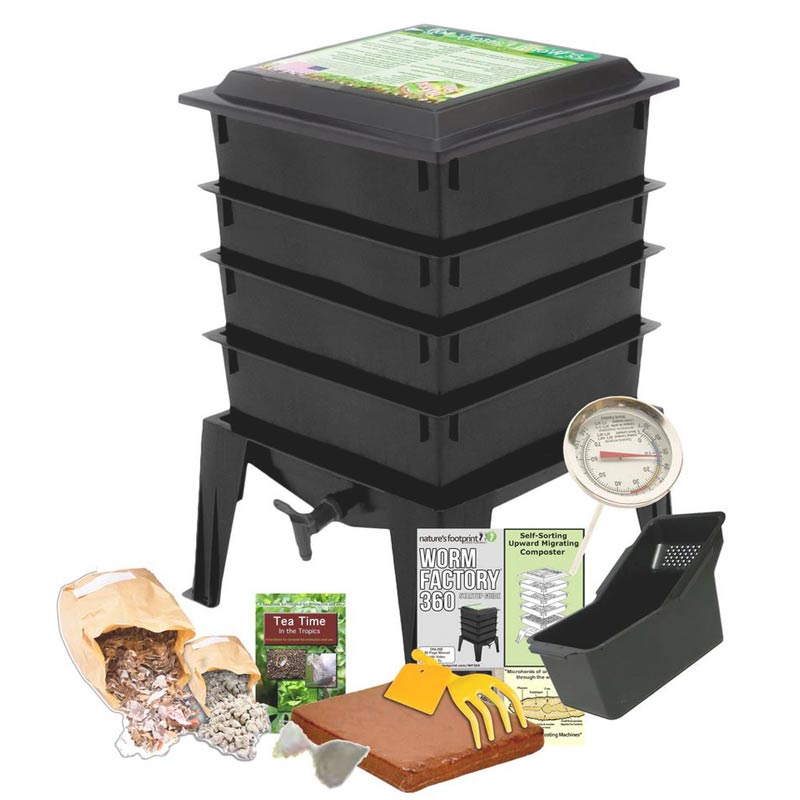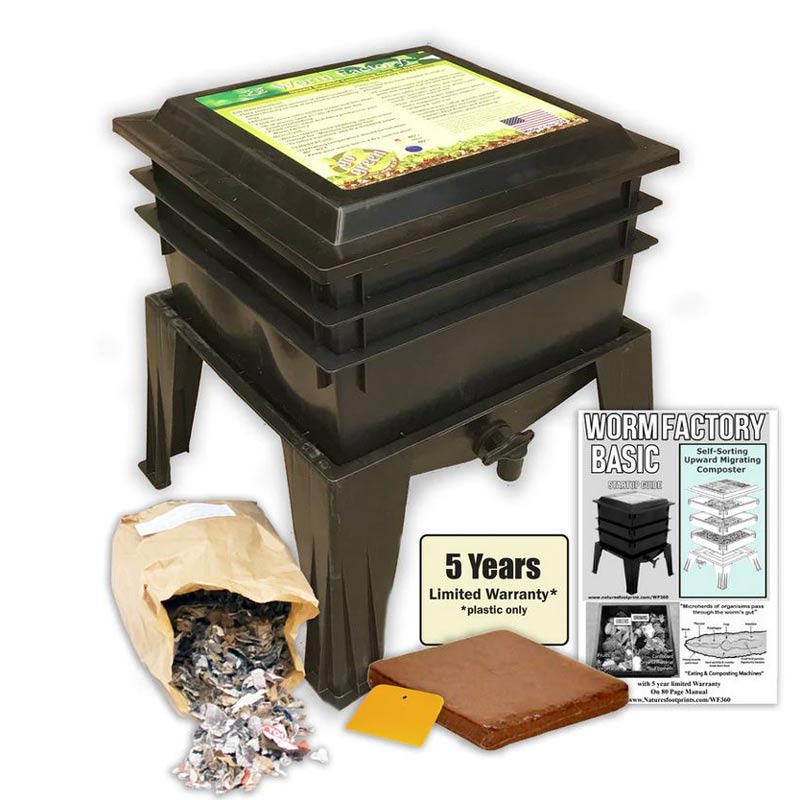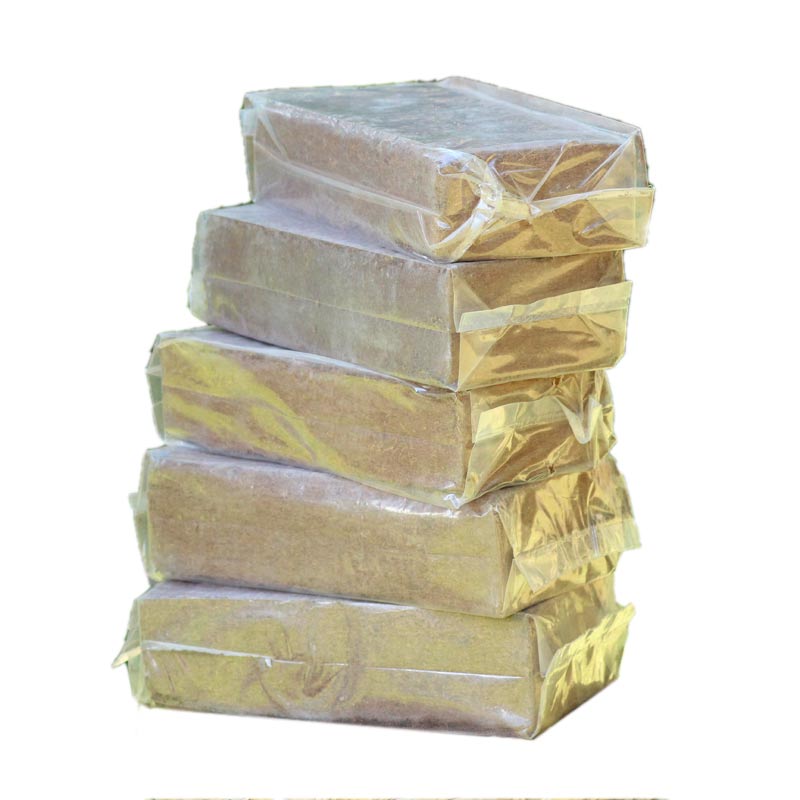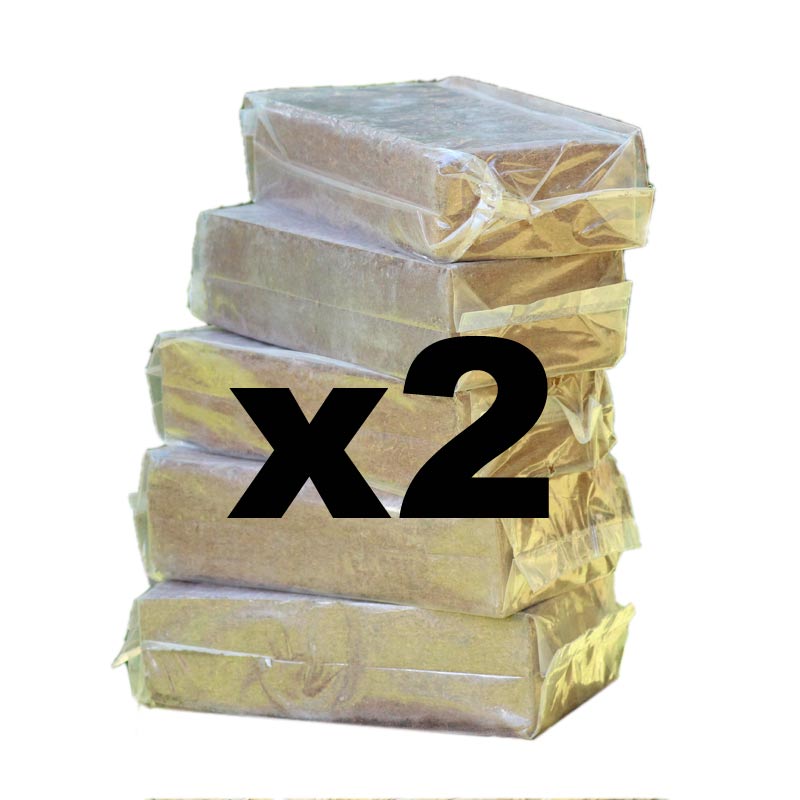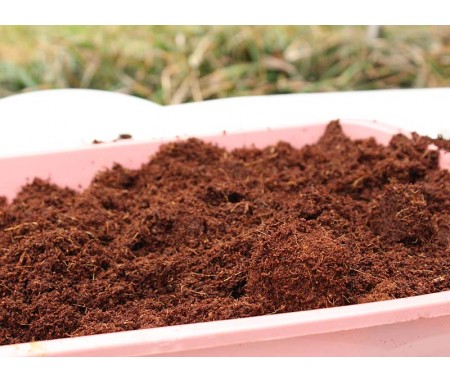How To Moisten a Block of Coconut Coir
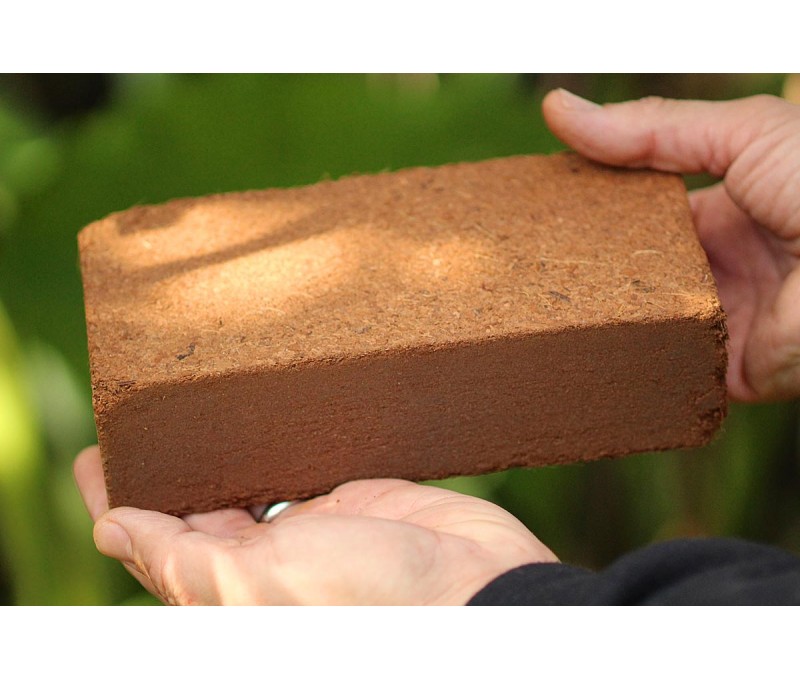
Coconut coir is a superb medium in which to raise your worms -- especially when used with the Worm Factory or any upward migration systems. During the manufacturing process coconut coir will be rinsed and then dried for over a year. The dried coconut fiber is then pressed into blocks, wrapped in plastic, and shipped to retailers.
Primarily used in the plant and food growing industry, coconut coir has outstanding water retention capacity and excellent air space and drainage properties making it a fantastic medium for earthworm bedding. But, before you add to your worm habitat, the coconut coir must first be moistened. Dropping it in a bucket of water and letting it soak might seem like an easy way to quickly moisten coconut coir. However, once the coconut coir block is submerged in the bucket of water, it begins to fall apart into smaller bits making if very difficult to collect and remove from the water.
Save time and effort by following these simple instructions on how to moisten a brick of coconut coir. Work smarter, not harder!
What You Will Need
- Coconut coir brick
- Measuring cup
- Plastic pan or tray
Step 1: Gather Materials
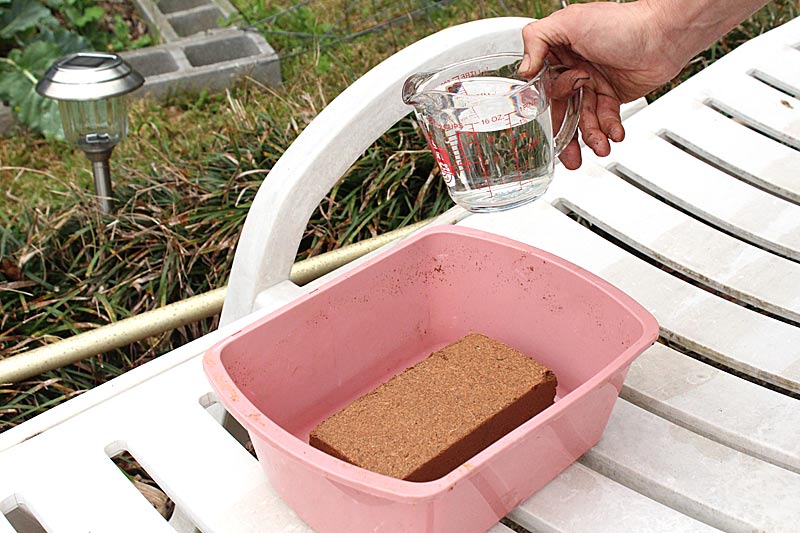
Place the pan on a flat surface, then put the coconut coir brick inside of the pan. Fill a vessel with water -- keep track of how many cups you are using and have used.
Step 2: First Soak
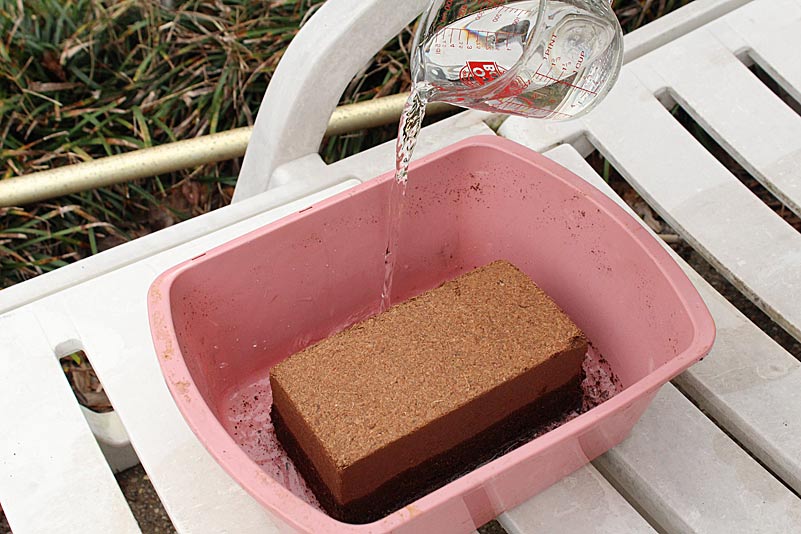
Add 5 cups of water to the bottom of the pan. DON'T pour the water directly on top of the coconut coir. Pour into the bottom of the pan so that the brick absorbs the water from the bottom like a wick. You may need to measure and fill the vessel up multiple times because it isn't large enough to hold 5 cups of water. This is totally fine!
Step 3: Let Water Absorb
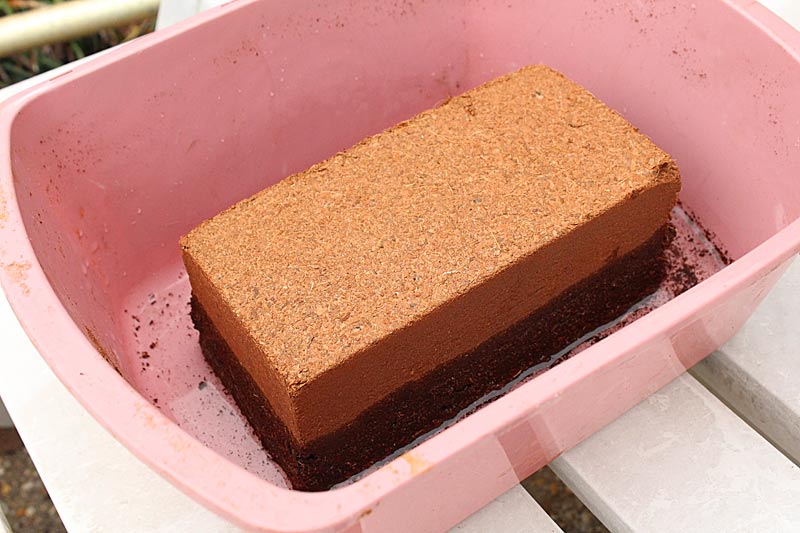
Allow the water to completely absorb into the coconut coir brick. There should not be any water left in the bottom of the pan before you move to the next step.
Step 4: Flip the Brick
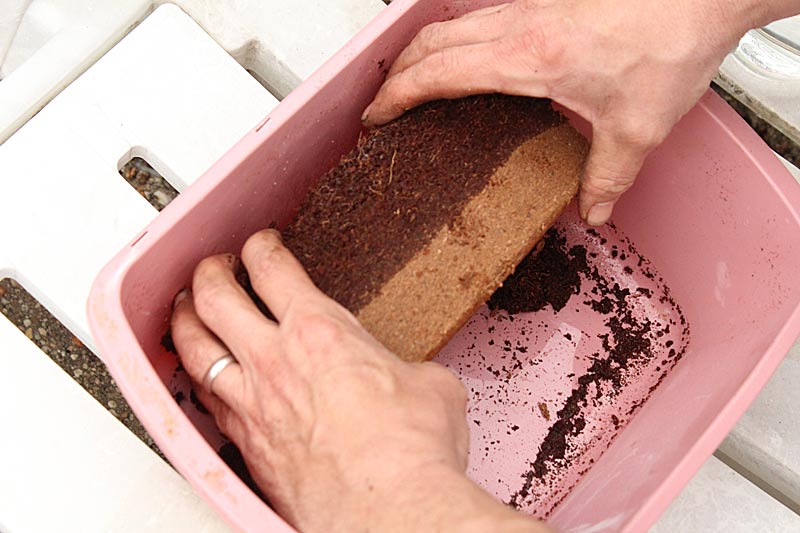
GENTLY turn the brick over 180 degrees so that the dry brick top is now touching the bottom of the pan. Try not to let the brick fall apart as you flip it. It is OK if some coconut flakes off of the brick. You just don't want it to completely fall apart.
Step 5: Second Soak
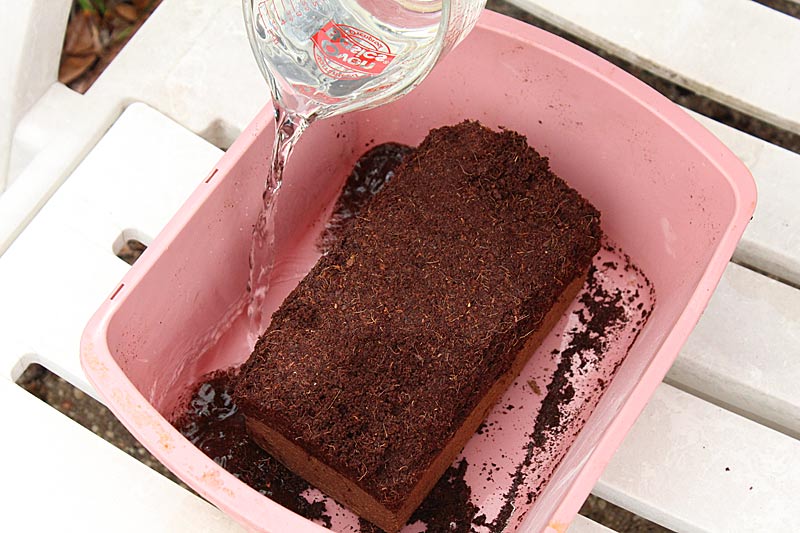
Just like the "First Soak", add 5 cups of water to the bottom of the pan. Again, DON'T pour the water directly on top of the coconut coir. Pour into the bottom of the pan so that the brick absorbs the water from the bottom like a wick. You may need to measure and fill the vessel up multiple times because it isn't large enough to hold 5 cups of water.
Step 6: Let Water Absorb
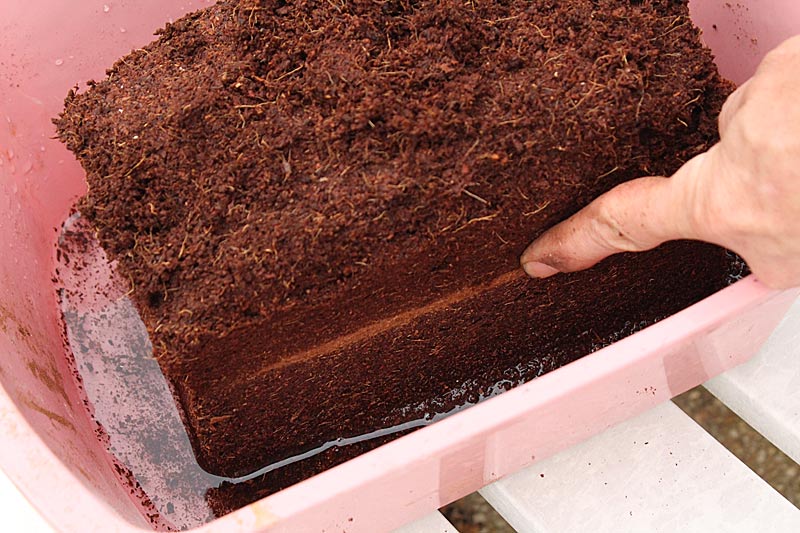
Again, allow the water to completely absorb into the coconut coir brick until the bottom of the pan no longer has any water. There may be a "dry line" in the middle of the brick. This is OK.
Step 7: Remove Loose Pieces
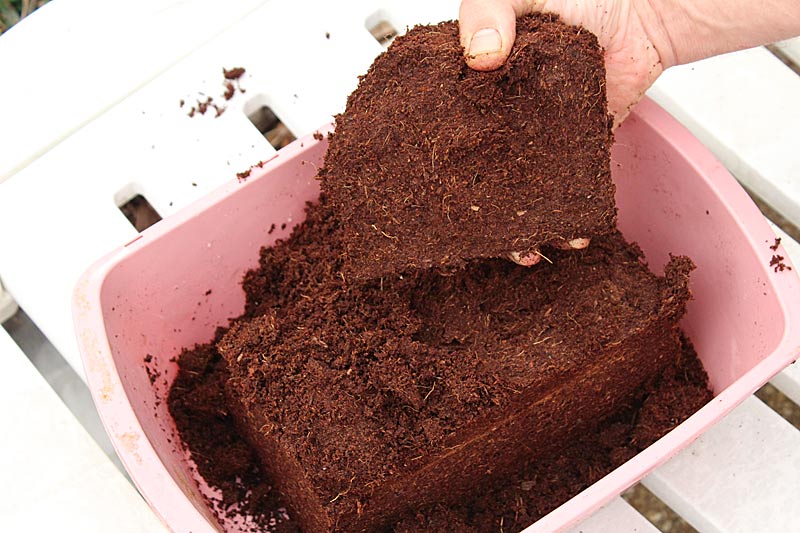
The moistened coconut will easily separate from the brick. Gently remove the loose coir and place into the bottom of the pan.
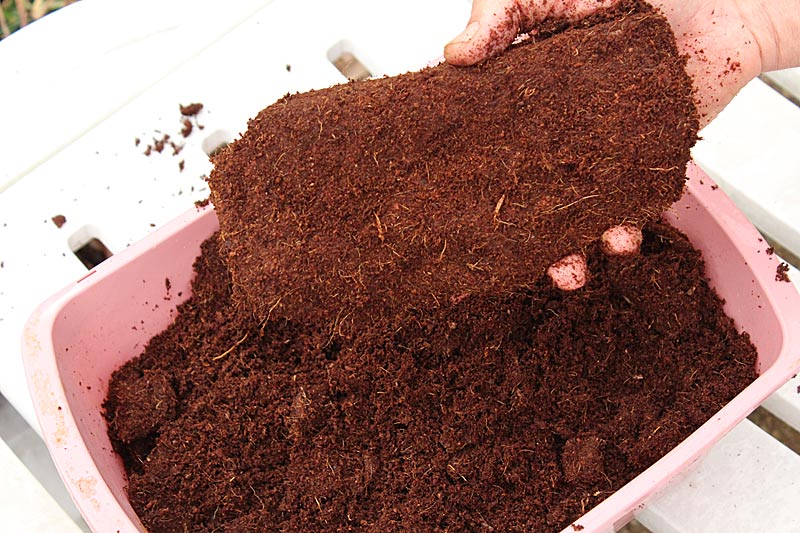
There could be a chunk in the middle that is not quite moist enough to fall apart.
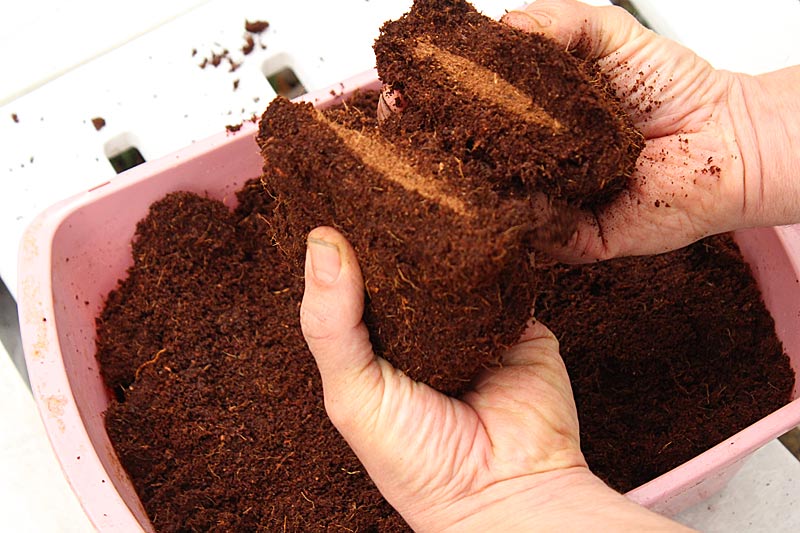
Take this dry chunk and break in half. You may see a dry line. If there isn't a dry line, that's okay. Since its holding together, and not falling apart, it is still not quite moist enough.
Step 8: Moisten Center Chunk
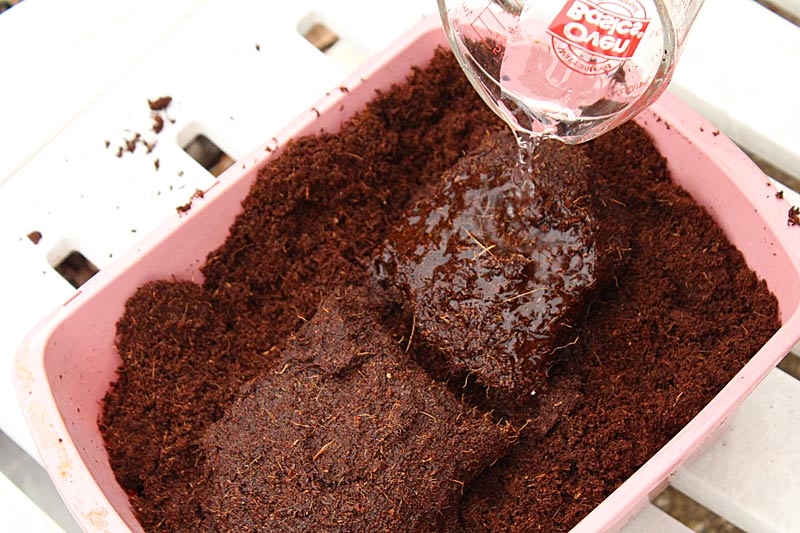
Add 1.5 cups of water to the dry center chunk. Let absorb for a few minutes.
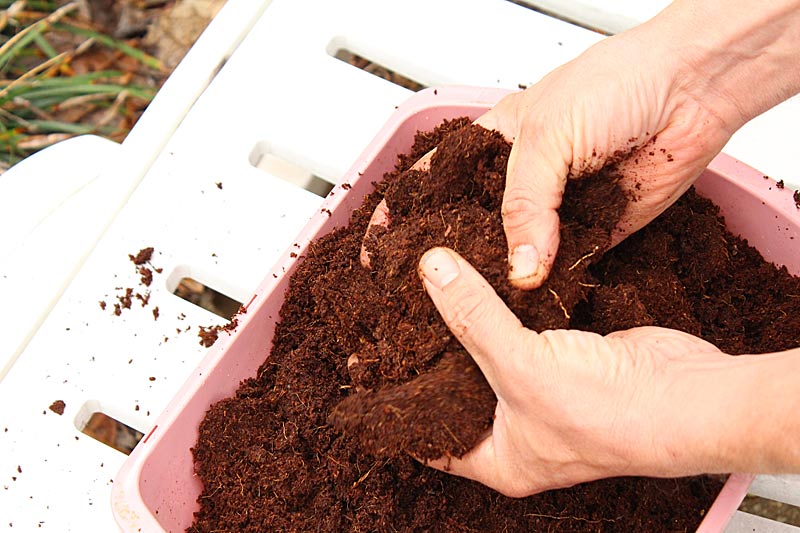
Break apart the moistened center chunk.
Step 9: Finished!
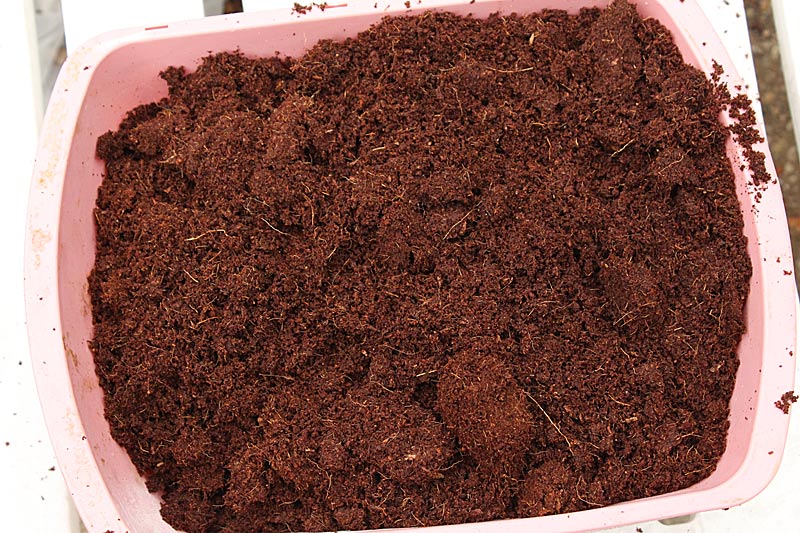
You have successfully moistened a brick of coconut coir and it is ready to use in your worm habitat!

